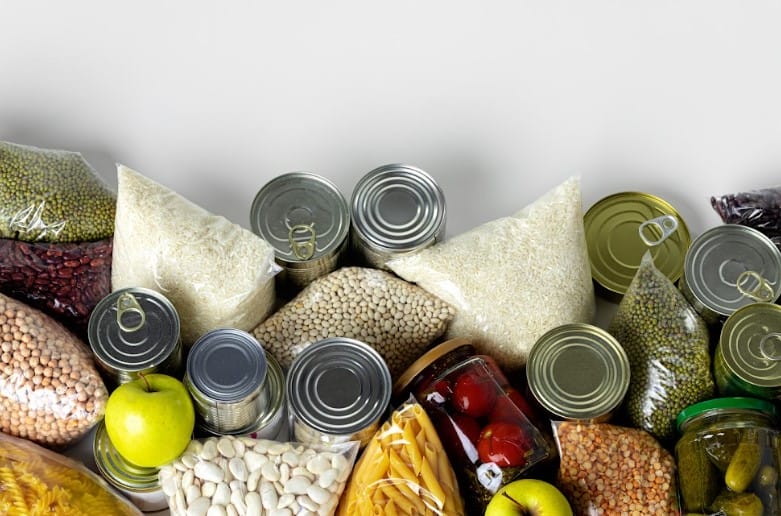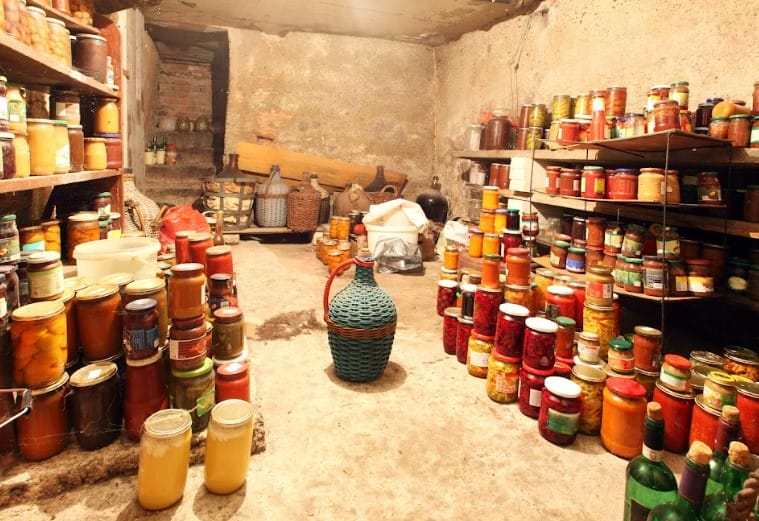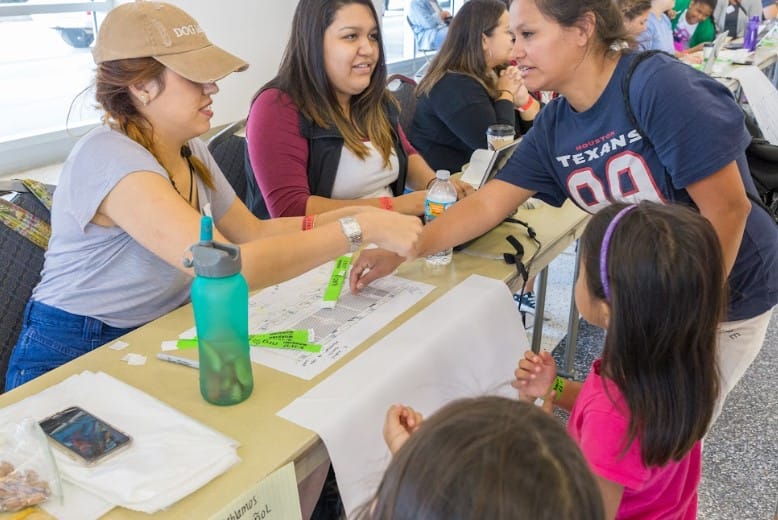 When you begin to prep, you will hear much talk about the timeframe you need to prep to endure whatever disaster you face. How long should you expect to have to make it on your own? The range is astounding– from 3-days to a Mad Max post-apocalyptic, Walking Dead as long as you can survive. It’s somewhat overwhelming for new preppers, and many don’t take that first step because they are unwilling to commit to a post-apocalyptic level of preps. The simple fact is you are buying time. You are prepping for your longevity. So how long should that be?
3-DAYS
When you begin to prep, you will hear much talk about the timeframe you need to prep to endure whatever disaster you face. How long should you expect to have to make it on your own? The range is astounding– from 3-days to a Mad Max post-apocalyptic, Walking Dead as long as you can survive. It’s somewhat overwhelming for new preppers, and many don’t take that first step because they are unwilling to commit to a post-apocalyptic level of preps. The simple fact is you are buying time. You are prepping for your longevity. So how long should that be?
3-DAYS
 Government agencies set the bar the lowest by suggesting you have 3-days of food and water on hand for each person and pet in your household at all times. They will further advise you to have a few other items like a flashlight and a radio. Governments are concerned about getting most people through the initial phases of a disaster to a point in time where they believe that they will be able to step in and establish relief camps, evacuation centers, or open supply lines for relief food, water, and medical care. They are looking to count and clear the bodies and move the rest of the people to safety or rebuild and clear the wreckage. This minimalist approach to preparedness would be great if everyone did this. If everyone had 3-days of emergency supplies all the time, you wouldn’t see the runs on stores before a disaster like a hurricane strikes. You wouldn’t see as many desperate people in the aftermath. 3-days is the low-hanging fruit, as they say. It’s easily plucked from the tree by anyone, and it is quick to be depleted.
3-WEEKS
Government agencies set the bar the lowest by suggesting you have 3-days of food and water on hand for each person and pet in your household at all times. They will further advise you to have a few other items like a flashlight and a radio. Governments are concerned about getting most people through the initial phases of a disaster to a point in time where they believe that they will be able to step in and establish relief camps, evacuation centers, or open supply lines for relief food, water, and medical care. They are looking to count and clear the bodies and move the rest of the people to safety or rebuild and clear the wreckage. This minimalist approach to preparedness would be great if everyone did this. If everyone had 3-days of emergency supplies all the time, you wouldn’t see the runs on stores before a disaster like a hurricane strikes. You wouldn’t see as many desperate people in the aftermath. 3-days is the low-hanging fruit, as they say. It’s easily plucked from the tree by anyone, and it is quick to be depleted.
3-WEEKS
 Far better would be to have the correct gear, food, and water to last you and every member of your family three weeks. That will get you through predictable disasters like the hurricane and unpredictable disasters like civil unrest. Of course, there are no guarantees, but it’s sufficient enough to hunker down and lockdown and be independent, cloistered away from the wildly swirling chaos outside. It may also be enough to make it through a brutal aftermath until order and relief efforts are restored. Still, it’s small enough for you to take a good deal of it with you if you need to bug out to a geographically safer area.
We tell beginning preppers first to get that low-hanging fruit of 3-days. Then set your goal to reach higher to that 3-week mark. At that point, you would need at least 20-30 gallons of water per person, at a bare minimum. You would need food and nutrition enough to provide you with at least 40,000 to 50,000 calories or so and a means to prepare it. That may sound like a lot of calories to avoid running a calorie deficit for 21 days, but it is doable.
3-MONTHS: The Solid Foundation
Far better would be to have the correct gear, food, and water to last you and every member of your family three weeks. That will get you through predictable disasters like the hurricane and unpredictable disasters like civil unrest. Of course, there are no guarantees, but it’s sufficient enough to hunker down and lockdown and be independent, cloistered away from the wildly swirling chaos outside. It may also be enough to make it through a brutal aftermath until order and relief efforts are restored. Still, it’s small enough for you to take a good deal of it with you if you need to bug out to a geographically safer area.
We tell beginning preppers first to get that low-hanging fruit of 3-days. Then set your goal to reach higher to that 3-week mark. At that point, you would need at least 20-30 gallons of water per person, at a bare minimum. You would need food and nutrition enough to provide you with at least 40,000 to 50,000 calories or so and a means to prepare it. That may sound like a lot of calories to avoid running a calorie deficit for 21 days, but it is doable.
3-MONTHS: The Solid Foundation
 After 3-days and 3-weeks, the next logical goal or benchmark is 3-months. This should be everyone’s goal when getting serious about preparedness. 3-months is where you want to be. When you are confidently prepped to 3-months you can also scale up as needed. Once you hit the 3-month mark, you should definitely strive to push your preps further, but when you have a solid 3-months, you know that the foundations of your preps are solid. If you have a full year as your target, you might get your food there, but might still be lacking in water or fuel sources. If a disaster strikes before you can get to that one-year goal, you will have gaps in your preps.
When you’re talking 3-months of stored water, you are talking about having 90-gallons of water per person stored up, which is an absolute bare minimum for each person. That’s nearly two 55-gallon barrels of water per person. It’s not impossible, but it’s a space issue for sure. Food is a little easier because a sack of beans and a sack of rice would give you the calories to survive, even though you would be far from thriving and nutritionally sound if that’s all you had to eat (and I hope you have a food plan for far more options). Sticking with the water analogy, though, a year’s worth of water would be almost 7, 55-gallon barrels for one person. For some, that would be very difficult depending on your living environment, but water is one of those essential items you absolutely have to have to survive.
Your long-term survival is going to depend more upon your knowledge, resourcefulness, and skills. You may have 3-months or a year of water stored up, but if you don’t know how to harvest water from the wild, can’t treat or filter it, don’t know how to build a rain harvesting system, or don’t know how to ration and keep track of your supply, when it’s gone, it is gone. If you have these skills, though, your water supply goes from a fixed time period to an ongoing collection and treatment process that will last you as long as you need. You can replenish it, find resources to top it off, and reduce waste and overconsumption.
The time you need has to be sufficient for the challenge of the disaster. 3-days will get you to the relief phase of most natural disasters. 3-weeks will get you through the more extreme natural disasters and several unknown disasters that could befall you. 3-months is that sweet spot that allows you to thrive through most disasters, known and unknown, and adapt to any new way of life growing out of the aftermath. After 3-months, you will know if help is coming or if you are genuinely on your own. And if help is not coming in 3 months, we are in a new world.
If you are properly prepping, you are also prepping for the very real possibility that recovery from the disaster won’t be possible. You are preparing your skills and knowledge. You’re setting aside seeds and other long-term vision solutions to re-establish a livable environment for yourself. In that sense, even the person prepped for 3-months is really prepping for many years into the future.
SO, 3-MONTHS IT IS. NOW WHAT?
After 3-days and 3-weeks, the next logical goal or benchmark is 3-months. This should be everyone’s goal when getting serious about preparedness. 3-months is where you want to be. When you are confidently prepped to 3-months you can also scale up as needed. Once you hit the 3-month mark, you should definitely strive to push your preps further, but when you have a solid 3-months, you know that the foundations of your preps are solid. If you have a full year as your target, you might get your food there, but might still be lacking in water or fuel sources. If a disaster strikes before you can get to that one-year goal, you will have gaps in your preps.
When you’re talking 3-months of stored water, you are talking about having 90-gallons of water per person stored up, which is an absolute bare minimum for each person. That’s nearly two 55-gallon barrels of water per person. It’s not impossible, but it’s a space issue for sure. Food is a little easier because a sack of beans and a sack of rice would give you the calories to survive, even though you would be far from thriving and nutritionally sound if that’s all you had to eat (and I hope you have a food plan for far more options). Sticking with the water analogy, though, a year’s worth of water would be almost 7, 55-gallon barrels for one person. For some, that would be very difficult depending on your living environment, but water is one of those essential items you absolutely have to have to survive.
Your long-term survival is going to depend more upon your knowledge, resourcefulness, and skills. You may have 3-months or a year of water stored up, but if you don’t know how to harvest water from the wild, can’t treat or filter it, don’t know how to build a rain harvesting system, or don’t know how to ration and keep track of your supply, when it’s gone, it is gone. If you have these skills, though, your water supply goes from a fixed time period to an ongoing collection and treatment process that will last you as long as you need. You can replenish it, find resources to top it off, and reduce waste and overconsumption.
The time you need has to be sufficient for the challenge of the disaster. 3-days will get you to the relief phase of most natural disasters. 3-weeks will get you through the more extreme natural disasters and several unknown disasters that could befall you. 3-months is that sweet spot that allows you to thrive through most disasters, known and unknown, and adapt to any new way of life growing out of the aftermath. After 3-months, you will know if help is coming or if you are genuinely on your own. And if help is not coming in 3 months, we are in a new world.
If you are properly prepping, you are also prepping for the very real possibility that recovery from the disaster won’t be possible. You are preparing your skills and knowledge. You’re setting aside seeds and other long-term vision solutions to re-establish a livable environment for yourself. In that sense, even the person prepped for 3-months is really prepping for many years into the future.
SO, 3-MONTHS IT IS. NOW WHAT?
 If 3-months is the sweet spot you should set your goals to attain, what’s next? How do you do it? First, you need a workable plan. You won’t be successful in planning for disasters you won’t likely face. You won’t be successful with a bunch of gear you have no experience using. You won’t even be successful if all you have is food and water stored up since you may not have the proper nutrients, means to cook it, the capability to safely dispose of the waste, the proper awareness of operational security, rationing principles, and so forth. You have to have the resources, the tools to accomplish the job, and the knowledge of how to use those tools and maximize your resources. So, your preparedness begins with your supplies, tools, and understanding of how to deploy those assets best.
Focus on a foundation of food, water, and fuel or energy. Make sure you have a solid store of all three to get you through a 3-month period. Once you have mastered all aspects of a 3-month self-sufficient prepping, you can begin to scale up these resources without gaps. You can stretch your food stores in different ways to get to a year or more’s worth. You can also learn to forage and hunt. You can stretch your physical water supply, but you can also supplement your supplies through filtration and collection devices. You can invest in a solar battery system and electric cookware that runs off it sufficient enough to boil water and cook food. All the while you are expanding your preps and knowledge, your core 3-months is solid. We will say that after a disaster, water and fuel will be easier to obtain than food for most in a suburban or urban environment.
Ask yourself if you could close your front door for 3-months and survive, what would it take? If you have laid the foundations of inventory and rotation, built skills, and implemented a plan to prepare, you only need to apply these principles and practices over the next 3-month period. When you know you need more water, food, fuel, or other resources, you will have the skills to get those things, decrease your consumption if possible, or work around the problem. Once you have your core 3-months established you can focus on the equipment you need to increase your survival after a disaster. Having the right tool is 80% of the job. With the right equipment, you will add time to your survival.
In my course I’ll be releasing on the 14th of February of 2022, the Prepper’s Roadmap, I go through all of these issues with meticulous and purposeful considerations. I lay out a plan that you can build at your own pace, providing guidance to consistently build your preps to 3-months of self-sufficiency. I don’t tell people, out the gate, to prep for a year or more because prepping for a year as your target stretches your foundational preps too thin in the short term plus it’s just overwhelming to hear this when starting out. You are far better off building a stronger foundation by mastering the 3-months of preps. Get that before you look to stretch beyond that. Scaling up is much easier once you have this solid foundation built.
If you have your core 3-months of preps and equipment, you will be able to stretch that and supplement that as the circumstances force you to do if you have also taken time to build your prepping skills. If you’re stretching your food by foraging or scavenging, or you are stretching your water by harvesting rainwater or alternate wild water sources in your area, your 3-months of calculated preps will last you much longer. If you were also rationing and topped off as we teach right before the disaster strikes, your 3-months of supplies might actually be worth more.
CONCLUSION
Prepping isn’t a sprint. It’s a marathon. You have to set your goals realistically and move towards them step-by-step. If you place your target for 3-months and master that, you will be able to scale up to extend that time to a year or more. On a long enough timeline, everyone’s chances of survival drop to zero. We would guess that the person who methodically built that 3-month prep plan has a surer foundation in prepping than the person who set a year goal and scrambled to piece it together as best they could.
If you are just starting out, set your goal for 3-days–that lowest hanging fruit. Once you accomplish that, reach higher. Stretch it to 3-weeks or follow a clear plan like we’ll lay out in the Prepper’s Roadmap for 3-months. Once you have 3-months in order, you can aim higher, but you do so with the assurance that you haven’t left any glaring gaps in your preparedness. Not food, water, or equipment.
If you had to realistically guess at how long your current preps would last you through any major disaster, how long would that be? A day? A week? A month or more? Let us know your assessment of your own preps in the comments below. Could you make it to 3 months?
As always, stay safe out there.
If 3-months is the sweet spot you should set your goals to attain, what’s next? How do you do it? First, you need a workable plan. You won’t be successful in planning for disasters you won’t likely face. You won’t be successful with a bunch of gear you have no experience using. You won’t even be successful if all you have is food and water stored up since you may not have the proper nutrients, means to cook it, the capability to safely dispose of the waste, the proper awareness of operational security, rationing principles, and so forth. You have to have the resources, the tools to accomplish the job, and the knowledge of how to use those tools and maximize your resources. So, your preparedness begins with your supplies, tools, and understanding of how to deploy those assets best.
Focus on a foundation of food, water, and fuel or energy. Make sure you have a solid store of all three to get you through a 3-month period. Once you have mastered all aspects of a 3-month self-sufficient prepping, you can begin to scale up these resources without gaps. You can stretch your food stores in different ways to get to a year or more’s worth. You can also learn to forage and hunt. You can stretch your physical water supply, but you can also supplement your supplies through filtration and collection devices. You can invest in a solar battery system and electric cookware that runs off it sufficient enough to boil water and cook food. All the while you are expanding your preps and knowledge, your core 3-months is solid. We will say that after a disaster, water and fuel will be easier to obtain than food for most in a suburban or urban environment.
Ask yourself if you could close your front door for 3-months and survive, what would it take? If you have laid the foundations of inventory and rotation, built skills, and implemented a plan to prepare, you only need to apply these principles and practices over the next 3-month period. When you know you need more water, food, fuel, or other resources, you will have the skills to get those things, decrease your consumption if possible, or work around the problem. Once you have your core 3-months established you can focus on the equipment you need to increase your survival after a disaster. Having the right tool is 80% of the job. With the right equipment, you will add time to your survival.
In my course I’ll be releasing on the 14th of February of 2022, the Prepper’s Roadmap, I go through all of these issues with meticulous and purposeful considerations. I lay out a plan that you can build at your own pace, providing guidance to consistently build your preps to 3-months of self-sufficiency. I don’t tell people, out the gate, to prep for a year or more because prepping for a year as your target stretches your foundational preps too thin in the short term plus it’s just overwhelming to hear this when starting out. You are far better off building a stronger foundation by mastering the 3-months of preps. Get that before you look to stretch beyond that. Scaling up is much easier once you have this solid foundation built.
If you have your core 3-months of preps and equipment, you will be able to stretch that and supplement that as the circumstances force you to do if you have also taken time to build your prepping skills. If you’re stretching your food by foraging or scavenging, or you are stretching your water by harvesting rainwater or alternate wild water sources in your area, your 3-months of calculated preps will last you much longer. If you were also rationing and topped off as we teach right before the disaster strikes, your 3-months of supplies might actually be worth more.
CONCLUSION
Prepping isn’t a sprint. It’s a marathon. You have to set your goals realistically and move towards them step-by-step. If you place your target for 3-months and master that, you will be able to scale up to extend that time to a year or more. On a long enough timeline, everyone’s chances of survival drop to zero. We would guess that the person who methodically built that 3-month prep plan has a surer foundation in prepping than the person who set a year goal and scrambled to piece it together as best they could.
If you are just starting out, set your goal for 3-days–that lowest hanging fruit. Once you accomplish that, reach higher. Stretch it to 3-weeks or follow a clear plan like we’ll lay out in the Prepper’s Roadmap for 3-months. Once you have 3-months in order, you can aim higher, but you do so with the assurance that you haven’t left any glaring gaps in your preparedness. Not food, water, or equipment.
If you had to realistically guess at how long your current preps would last you through any major disaster, how long would that be? A day? A week? A month or more? Let us know your assessment of your own preps in the comments below. Could you make it to 3 months?
As always, stay safe out there. 
